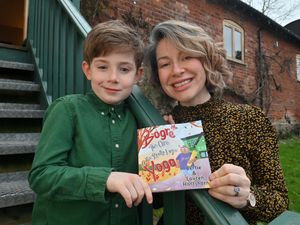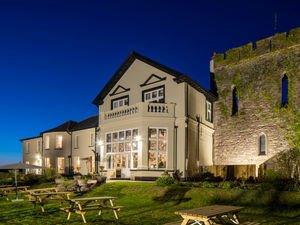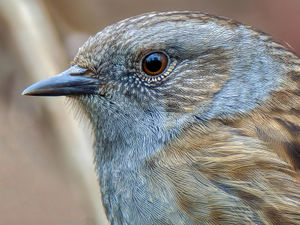'It’s done by eye': The art of thatching a roof
The sight of a thatched roof on a cottage is one of the most quintessential British countryside sights.
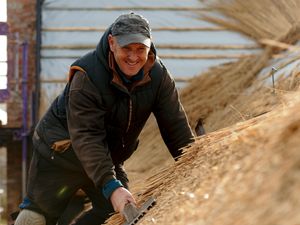
Seeing a golden roof on a summer’s day is a true thing of beauty – and Shropshire has its fair share of thatches.
The chances are that many of the thatched roofs you see will be the handiwork of the Draycott family.
Paul Draycott is a third generation thatcher. His grandfather Harold was a thatcher and Paul himself started as a youngster with his two uncles Ken and Bryan.
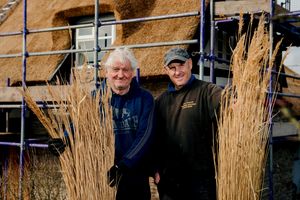
“The last time this house was thatched was by my uncle back in 1983. I was here as well, I was only 14 at the time. Now I’m doing it again,” says Paul as he sits on scaffold around a house at Middleton On The Hill deep in the south Shropshire hills.
Paul started thatching with his family when he was 12 years old.
“I would just be with my uncles doing tidying up and things like that,” he says. “I was taking notes and watching what they were doing though.
“I learned thatching through the family and then they put me on courses when I left school at 16. I didn’t do any exams, I was just focussed on thatching.”
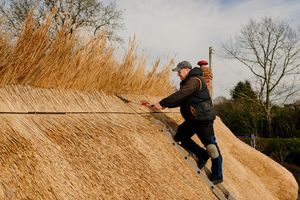
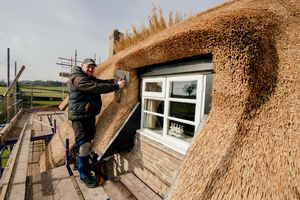
Paul attended Knutston Hall in Northamptonshire which was a college that trained thatchers.
“You had to be working as a thatcher to get on the course,” he said. “A lot of it was onsite training, you couldn’t just go on the course because nobody would let you on their roof to try it. You had to be supervised by other thatchers.
“When I was 18 I was left my my own to do a roof.”
On the cottage Paul is thatching he is using water reed which is imported from Hungary.
“It grows in the lakes and then they cut it every two years and harvest it,” he says. “You can also get it from France, Russia, Turkey, Poland, but Hungary tends to be the best.”
The reeds come in bundles and this latest job will require about 1,200 bundles to cover the roof.
What is really surprising though is the lack of tools that Paul needs.
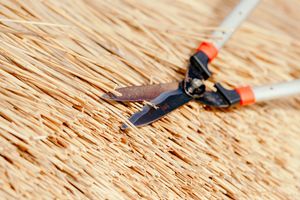
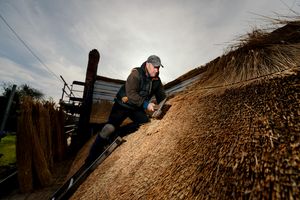
“All you need is a hammer, a knife, a bat and a leggett. For a ridge I’ll use shears too,” he says.
As he nails the bundles onto the roof the cottage gets that distinctive golden colour, giving it a picture postcard quality. But it won’t stay like that for long.
“I get loads of owners saying is there any chance you could keep it that colour, but it’s just a natural deterioration,” he said.
“It would stay nice and golden for roughly 12 months then it will start to go light grey, then grey, then a darker grey, then a more black. A thatched roof will last about 40 years.
“It’s the patch-ups and ridges that keep me in constant work really. This roof might well outlive me now.”
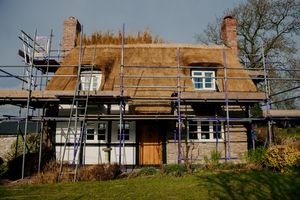
The biggest dangers to a thatched roof are fires and rodents such as squirrels, but Paul does all he can to protect the roof from those hazards.
“We do put netting on to try and keep birds and rodents off them as much as we can and stop an infestation,” he continues.
“When you take a thatch off, while it isn’t a legal requirement to have a fire felt, I always advise it. You can get chimney fires and things like that and if you have the felt on, it stops it burning the whole construction down.”
But Paul has sadly seen his work go up in flames.
The Kingfisher pub, or Hickory’s Smokehouse, in Kingswinford saw a blaze rip through the building’s historic thatched roof in the early hours of August 25, 2016 – Paul had worked for a long time on that roof before the fire.
“It burned from the inside out and they had to have it all re-done. It was a big old job that and it was very disheartening,” he says.
Thatched roofs are known for their insulation and soundproofing – but the reason most people choose thatch is the unique look. However, it isn’t something that can be done on just any roof.
“Everything has to be built different for a thatch,” Paul adds. “The pitch has to be steep so the water runs off – the steeper the better. “People would notice it’s warm in the winter and cool in the summer. It’s also very good for soundproofing, that’s why you see thatched roofs near airports.”
You can usually tell a roof Paul has done by his signature.
“I tend to stick to my pheasant on the top. That’s a Draycott roof,” he says with a smile.
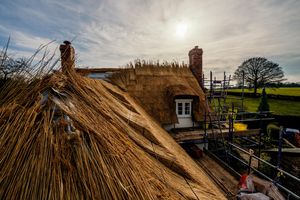
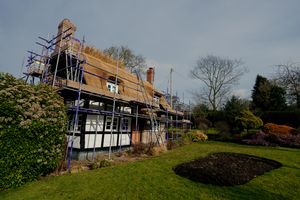
Paul is already booked up until summer 2020, and while full roof replacements are more rare Paul says there is always demand for patch-ups and the decorative ridges at the top that keep him in constant work.
“It’s like drawing a picture,” he says. “Someone will sometimes say I don’t like that bit and you have to rub it out and do that bit again. It’s done by eye, and you just have to hope people are happy with it.”
Paul has three children, and while none of them is thatching at the moment he says there’s a chance the business could go to a fourth generation.

